Speculation from Caravaggiomania: Ladispoli challenges Porto Ercole over painter's death
Lately there has been renewed discussion of Caravaggio’s death, which as we know occurred on July 18, 1610, in Porto Ercole, on the Tuscan coast near the border with Lazio, when the artist was not yet 39 years old.
More and more cultural initiatives are being promoted in the town of Ladispoli, just 60 km on the coast north of Rome. Counter-initiatives, so to speak, which with commendable tenacity and ambition intend precisely to advance another thesis, according to which the painter died in the hamlet of Palo Laziale (at that time, Palo). Here he had certainly disembarked on the voyage from Naples that was to take him to Rome, waiting to receive a pardon for the murder he committed in 1606. For reasons unclear, he was temporarily detained by the guards manning the port of call while the boat that had brought him there returned to Naples with his canvases. Once freed, for unknown reasons he headed for Porto Ercole, where he died of illness.
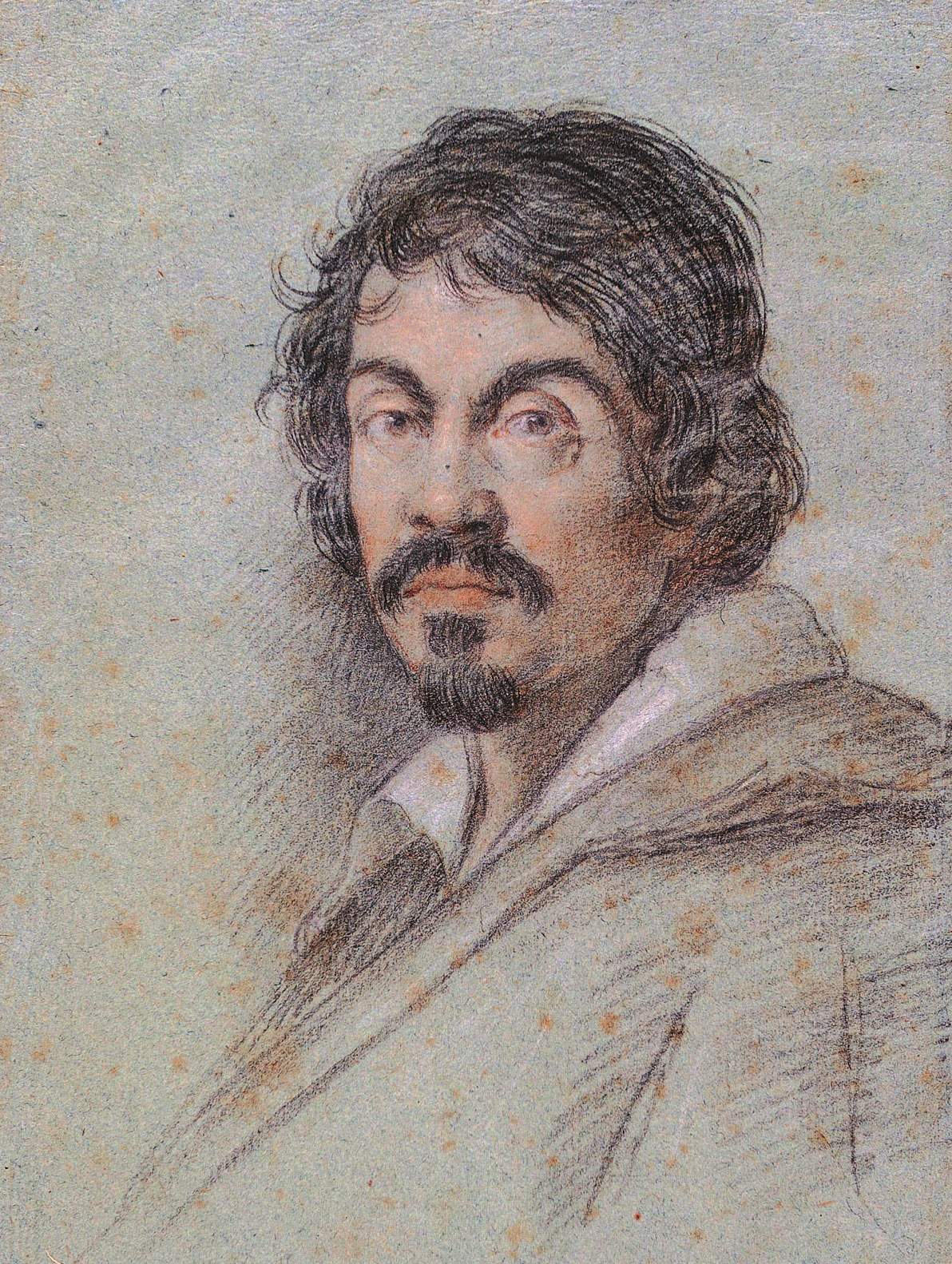 |
| Ottavio Leoni, Portrait of Caravaggio (1615-1620; black charcoal and pastels on blue paper, 234 x 163 mm; Florence, Biblioteca Marucelliana |
Much has been speculated around Michelangelo Merisi’s last days, attempting to somehow fill the information gap in the sources. But the death in Maremma, recorded in the oldest biographies and documents, has never been seriously questioned. He had tried, it is true, Vincenzo Pacelli (who died in 2014). He had even gone so far as to assume that the painter had been murdered in Palo, if not even earlier by throwing his body into the sea, according to a hypothesis that cried “state murder.” some of the highest authorities and institutions of the time would have hatched, happy “to get rid of an inconvenient protester, an artist who with every painting entered into controversy with Catholic orthodoxy and forced the public to reflect.” Perhaps a little too little (as well as exaggerated, respectfully speaking), to deem him so dangerous.... It had not, however, been the only eccentric hypothesis about Caravaggio launched by Pacelli, but it had essentially fallen on deaf ears already in the circles closest to him.
If today, on the other hand, his conspiratorial conjectures about the painter’s death are being revived, it is due to the combative campaign waged in the first person, it will be no accident, by a group of Ladispolese citizens, journalists and painters in particular. Much passion, this must be acknowledged, however not balanced by as much familiarity with Caravaggesque studies. Their voice is heard through the local media and is supported by the municipal administration, and the emphasis of certain web releases where, moreover, concepts such as “challenge” (aimed at Porto Ercole) recur, seems to betray the true nature of their movement of “vindication” (sic). For lacking the concrete support of the real Merisi specialists, it appears to be all entrusted to the power of communication and tied to a localist interest, and is at least reduced to more of a matter of town pride. But beyond the supporters’ climate, so to speak, without too much malice one can also sense someone’s flair for an economic, as well as an image, return. Indicative in this regard is the latest news in chronological order, which follows the installation of a large marble plaque on a traffic circle (“Welcome to Ladispoli last landing place of Caravaggio”), and of four (for now, but more are promised to be added) tourist signs of the so-called “Passeggiata del Caravaggio,” bearing solemn words of Pacelli. Indeed, a statue of Caravaggio is now planned, with which it is intended to “reaffirm” the conviction of death on the Latium coast. Let’s be clear, without disbursement of public money, at least as far as made known, but financed by local merchants.
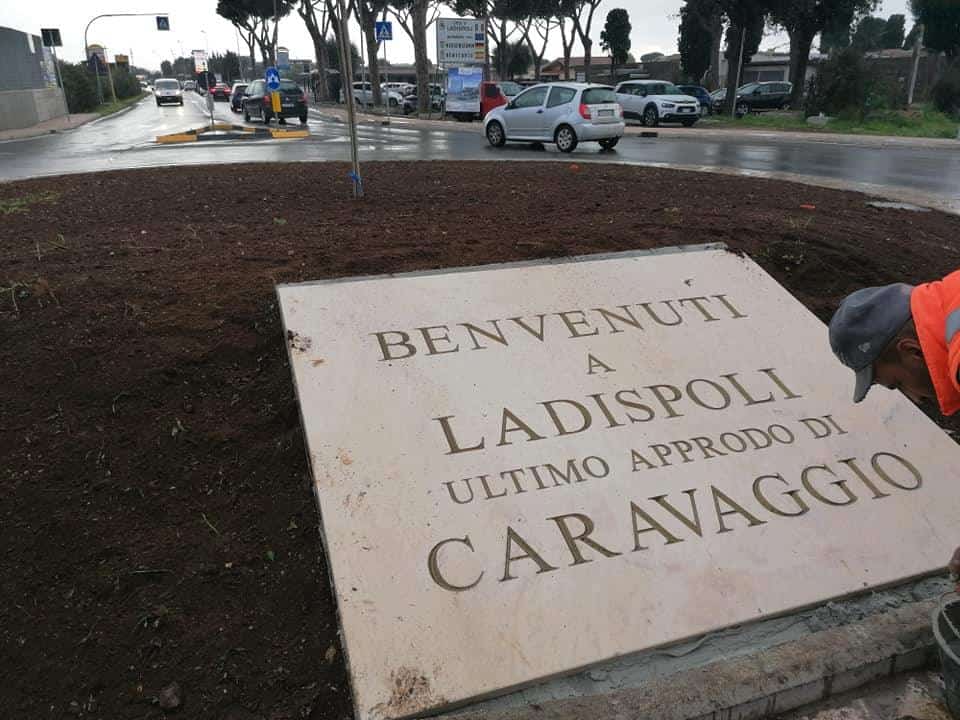 |
| The welcome plaque in Ladispoli |
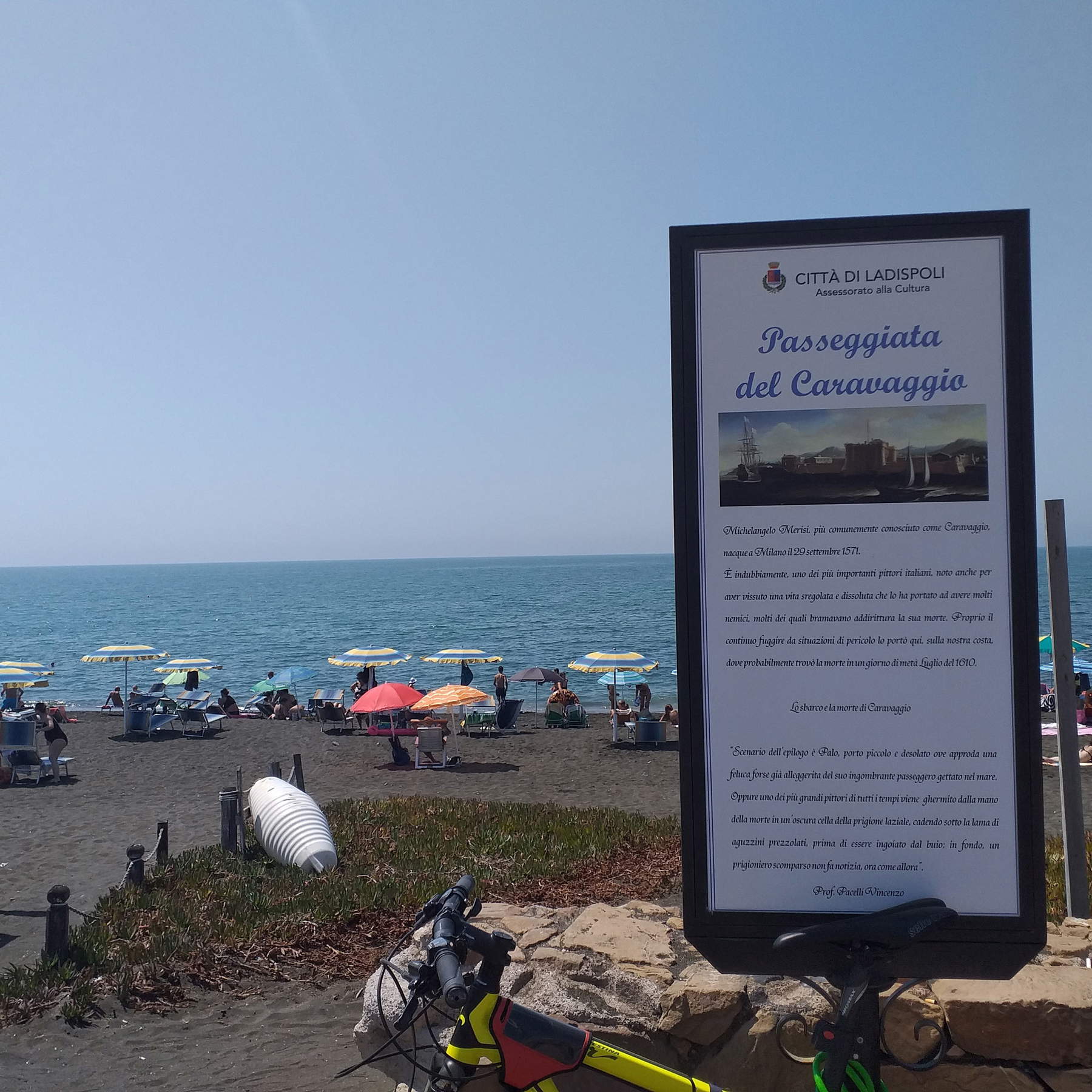 |
| The Caravaggio promenade |
And here a question of no small importance imposes itself. Can a municipal administration or any form of territorial association, beyond predictable self-interest, unilaterally think of writing its own version of history, evading serious discussion at the highest scientific levels? The answer, negative, is all too obvious. Especially if, as in this case, tangible and cumbersome signs are used (the monument, on which the Superintendence may well have a say), which one day risk, and this is probably one of the intentions, to become ’evidence’ themselves, at least in the eyes of the less informed or at any rate more intrigued by dietrologies. But to establish historical truth one must go through the critical examination of documents and sources and, above all, one cannot and should not start from preconstituted theses, for mere matters of shopkeeping and parochialism. Otherwise, with the death of expertise, any pretext will be good to create only confusion. Absurdly, the very end of Caravaggio could be claimed at this point by other localities that have been mentioned to that effect in literary and archival accounts, but on only one occasion each and for obvious misunderstandings and oversights: Procida, Civitavecchia, Naples, Terracina. Cerveteri itself, which borders Ladispoli, seemed in turn to claim its slice of popularity, if last February it had hosted the conference with the misleading title “When Caravaggio landed in Cerveteri,” generating further resentment among neighbors. Who knows if, at this rate, it will not be the city of Bologna that will claim to be considered the last home of the Lombard supremo. In fact, it is little known that Virgilio Saccà, in 1907 and thus a year before his death, published an excerpt of an exchange he had with the parish priest of Porto Ercole who, having set out on the trail of Caravaggio’s death certificate, mentioned a not otherwise found transport of the artist’s bones that took place, at an unspecified time, precisely in the Emilia capital.
Still fresh is the memory of the initiative sponsored by the then municipal administration of the ’rival’ (in the Ladispolan view) Porto Ercole, when in 2010 it dared even more, carrying Merisi’s alleged mortal remains in triumph. These remains were attributed to him (with probability, it is unclear how, estimated at 85 percent) through research whose goodness, in that case, was rightly contested by Pacelli himself. This, however, served little purpose: books were written, even a National Geographic documentary made and, to top it off, a monument and funerary park of dubious aesthetic taste in the center of the Tuscan village, later wisely removed and in any case confined to a more peripheral location. Among art historians there were those who made their dissent heard, which, however, is not happening now with the Ladispolan operation. Perhaps people do not want to give it too much weight, perhaps it is resignation before yet another manifestation of the now unstoppable so-called "Caravaggiomania." Yet the project of a ’claiming’ statue, which would at the same time launch an anti-historical message and an advertising one for the benefit of a few, cannot be ignored. At least by those who truly know and care about Caravaggio.
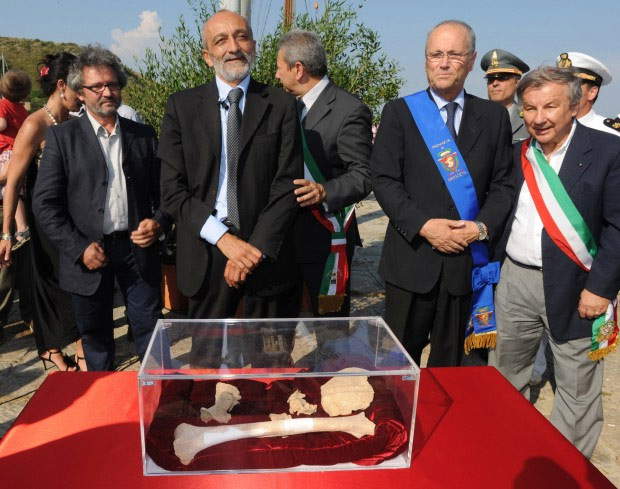 |
| The arrival of Caravaggio’s alleged bones in Porto Ercole in 2010 |
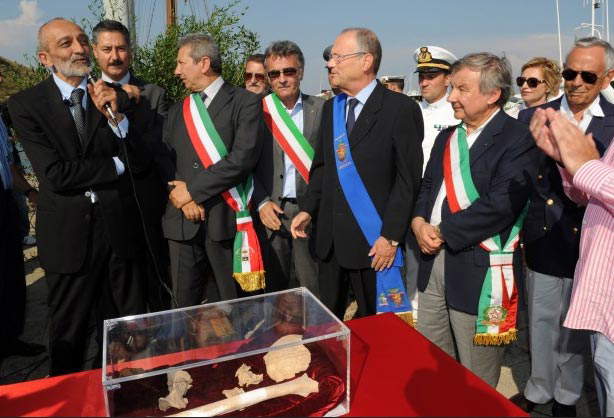 |
| The arrival of Caravaggio’s alleged bones at Porto Ercole in 2010 |
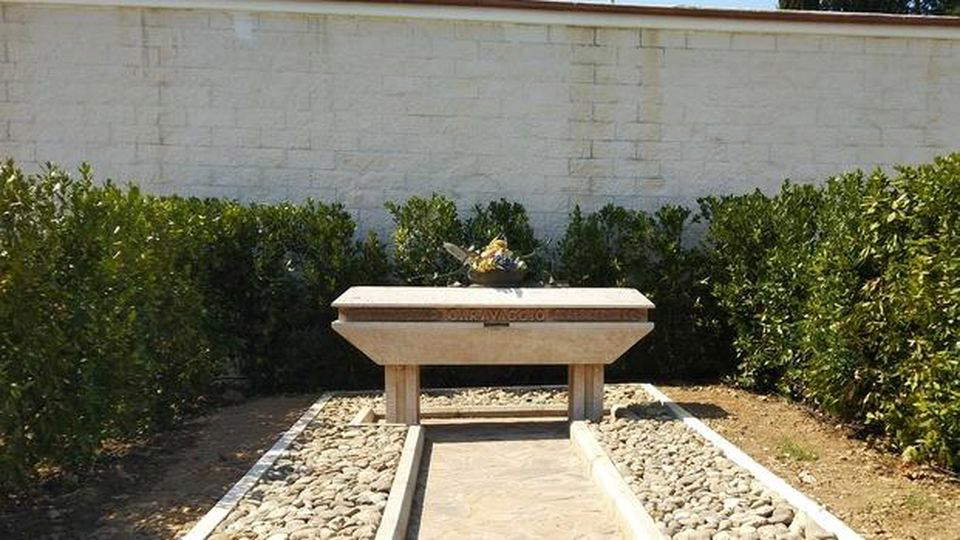 |
| The Porto Ercole monument in its current location |
Warning: the translation into English of the original Italian article was created using automatic tools. We undertake to review all articles, but we do not guarantee the total absence of inaccuracies in the translation due to the program. You can find the original by clicking on the ITA button. If you find any mistake,please contact us.





























